Win in offices, die in battles
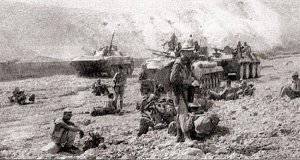 But they will have to fight according to other laws and according to other standards, which science fiction writers from the Ministry of Defense will not see in a nightmare.
But they will have to fight according to other laws and according to other standards, which science fiction writers from the Ministry of Defense will not see in a nightmare.Sixteen years of uninterrupted war have taught our military officials nothing (the author has in mind the period of the war in Afghanistan and armed conflicts in the post-Soviet space, the article was written in 1996 - note “Valiance”). The army repeats its mistakes from year to year, thousands of Russian guys have already paid for their blood, and the Armed Forces suffer defeat after defeat. Shame and disappointment force participants in these wars to leave the army, as a result, it loses the most important thing - carriers of combat experience.
In Russian military academies, officers with combat experience do not exceed 3-5% of the total number of students. Among the top military leaders there is not one who had the experience of commanding a platoon, company or battalion in battle, who would have experienced the pain of injuries and all the delights of fire contact with the enemy. That is why all their decisions and calculations will be easily refuted by land surveyors, shepherds and sellers of rural sellers who have combat experience.
The tasks that troops have to solve during local conflicts are not new. These include the long-term security of communications and strategic objects by guard outposts, the posting of transport convoys through the territory controlled by the enemy, the inspection of vehicles and caravans, the storming of fortified areas, ambushes and search actions, landing operations. All of them are different in nature, have their own characteristics of preparation and conduct, but, unfortunately, in our army they have become stereotyped and stencilled, which allows the enemy to take successful countermeasures.
The concept of most operations both in Afghanistan and in Chechnya and Tajikistan is reduced in an ideal model to the search for the enemy by forces of motorized rifle units acting as a live bait, stabbing the battle, and then by artillery strikes on the identified positions and targets of the enemy. The ingenious simplicity of this concept does not take into account the intellectual and combat potential of the enemy, as well as the low level of professional training of artillery spotters and the limited capabilities of artillery units for movement, placement on the ground and the supply of ammunition. In addition, the successful implementation of the plan requires the interaction of motorized rifle and artillery units, in which each motorized rifle company is supported by fire from no less than an artillery battalion (which is possible only in conditions of a positional war with an established front line).
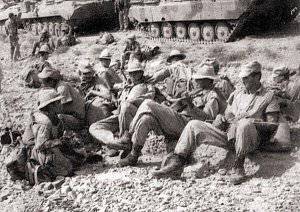 The experience of the hostilities in Afghanistan, Chechnya and Tajikistan shows that none of the large-scale operations conducted by the troops, with the so-called blocking, despite a significant concentration of troops, was not crowned with any success.
The experience of the hostilities in Afghanistan, Chechnya and Tajikistan shows that none of the large-scale operations conducted by the troops, with the so-called blocking, despite a significant concentration of troops, was not crowned with any success.Calculation of the forces and means necessary for the implementation of the plan of such an operation in the village with a population of up to 1000 people on 150-200 houses with an average area of 3 square. km, requires the involvement of up to one motorized rifle regiment. The calculation is based on the following regulatory indicators: the feasibility of removing the blocking units from the outskirts of the settlement - 800-1000 m., Which excludes the destruction of armored vehicles with grenade launcher fire, and the personnel - sighting rifle fire weapons; At the same time, such removal of troops allows for a maneuver with fire, successfully using regular fire capabilities of motorized rifle subunits.
The average size of the village to 1,5 km in diameter and the distance to the blocking units give in our case the length of the perimeter 9 km. In accordance with the tactical standards for defense (and the type of military action we are considering is defense), a motorized rifle company is defending in the area up to 1,5 km along the front. Thus, only the encirclement and settlement of the village must carry out the 6 mouth (or 2 battalion).
The settlement of the village is carried out by a reinforced company, two companies make up a reserve and guard artillery. So it turns out that the regiment of the whole conducts and ensures the operation to disarm the group not exceeding the number of the motorized rifle platoon.
Unfortunately, even this balance of forces does not guarantee the successful completion of the operation. It is impossible to conceal the preparation of such a number of servicemen for combat operations and advancement to the site of the operation from enemy reconnaissance. Only the final stage of the march - the occupation of positions around the village in the absence of fire contact with the enemy (fire resistance) - is carried out at a speed not exceeding 10 km / h. This is under favorable weather conditions and moderately rugged terrain. Thus, the time to block the settlement in two converging directions is at least half an hour. Add to this the unmasking factors accompanying the advancement of our troops - engine noise, dust plume, low communication discipline - and it turns out that the time required to evacuate ammunition depots and enemy manpower is from 2 to 3-4 hours. This allows the enemy to withdraw the main forces of the group from under the planned strike and organize fire resistance on favorable terms.
In practice, the situation is much more complicated and dramatic for the federal forces. The lack of necessary experience, and in some cases the corruption of our military officials and the skillful organization of the enemy intelligence, allow him to know about upcoming events in a few days.
The practice of patterned repetition of such operations creates an ideal opportunity for the enemy to impose a battle at the time that suits him and at his chosen place. Be sure that on the approach to the settlement, which is the object of the study, the enemy pushes the road with anti-tank mines, land mines and all sorts of explosive mine traps, and on the way back be ready to land in an ambush organized by militants from neighboring villages.
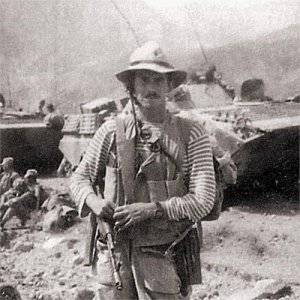 Anyone who took part in the hostilities of the past few years knows that not a single unit, not a single unit is able to provide 100% staffing and combat equipment. At best, to participate in operations, it is possible to attract up to half of the regular personnel and military equipment. This leads to a weakening of the battle formations. The distance between combat vehicles is from 200 to 500 meters, our defense is not solid positional, and the lack of a system of engineering structures, including trenches, communication routes, shelters for personnel and military equipment is an example of a focal, hastily organized motorized rifle squad. At best, the engineering equipment position system includes the 3-4 prone trench, located on either side of the combat vehicle, and several anti-personnel grenades put up for stretching. That does not provide reliable cover possible ways of withdrawal of the enemy or the elimination of the breakthrough of his group.
Anyone who took part in the hostilities of the past few years knows that not a single unit, not a single unit is able to provide 100% staffing and combat equipment. At best, to participate in operations, it is possible to attract up to half of the regular personnel and military equipment. This leads to a weakening of the battle formations. The distance between combat vehicles is from 200 to 500 meters, our defense is not solid positional, and the lack of a system of engineering structures, including trenches, communication routes, shelters for personnel and military equipment is an example of a focal, hastily organized motorized rifle squad. At best, the engineering equipment position system includes the 3-4 prone trench, located on either side of the combat vehicle, and several anti-personnel grenades put up for stretching. That does not provide reliable cover possible ways of withdrawal of the enemy or the elimination of the breakthrough of his group.The insurgents break through, as a rule, with the onset of dusk, and provides for salvo fire from all available anti-tank weapons (mainly RPG-7) at the nearest armored vehicle, and then destroying stunned motorized riflemen in poorly equipped positions.
The blows are made from the shortest distance from the shelter for 3-5 minutes, and then an organized exit from the environment is carried out. During this time, our command does not have time to transfer the reserve to the breakthrough site (often it does not even bother to create it), and the preparation of artillery fire, including zeroing and adjustment, takes at best 12-15 minutes. This means 0% of the effectiveness of the shells. Exactly the same effectiveness and has the fire support of neighboring offices. In a real battle, shooting at a distance greater than 150-200 meters is a waste of ammunition.
An example of such actions is the breakthrough of the grouping of the Afghan Mujahideen from the environment in the area of their training center in the village of Barmazit 17 February 1986. Then, during the breakthrough, two BMP-2 border guards were destroyed. Or a breakthrough of a group of Mujahideen of more than 200 militants in the area of the fortified area in the province of Baghlan 24 March 1987. Finally, the most famous example is the breakthrough of Raduyev’s militants from May Day.
Both the Mujahideen in Afghanistan and the militants in Chechnya quickly learned how to nullify our advantage in artillery, shortening the fire contact distances to 50-200 meters, in which the artillery fire becomes disastrous for its troops. In a battle at such a distance, not a single gunner can ensure the defeat of the enemy without hitting him.
In such conditions, the one who can achieve numerical superiority on the battlefield wins and who has the advantage in portable weapons designed to defeat the enemy in shelters or armored facilities. Preference is given to their species from the bench rather than by the hinged path.
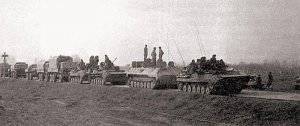 The fighting during the storming of Grozny was an excellent confirmation of the erroneous views of the Russian command, which relied solely on the use of armored objects and artillery. In conditions of limited visibility, complex rugged terrain or urban neighborhoods, maneuverability and fire capabilities of all types of military equipment are sharply limited.
The fighting during the storming of Grozny was an excellent confirmation of the erroneous views of the Russian command, which relied solely on the use of armored objects and artillery. In conditions of limited visibility, complex rugged terrain or urban neighborhoods, maneuverability and fire capabilities of all types of military equipment are sharply limited.The walls of buildings, dense vegetation in fast-moving combat at short distances are more preferable shelters for personnel than infantry fighting vehicles and armored personnel carriers. Moreover, these armored vehicles are of additional interest to the enemy, being an attractive target with extremely limited possibilities for movement, firing and surveillance. The increased engine noise, the sharp, far-reaching odor of exhaust gases are one of the main signs of revealing, allowing the enemy to easily avoid a fire collision under unfavorable conditions and strike her from the shelter from short distances.
According to the testimony of the Chechen separatists themselves, in such battles the RPG-7 and its handicraft modifications became the main means of defeating the personnel of the Russian troops. Notable is the composition of the assault groups of militants and their weapons, where on 5 there are two RPG-7 people and, in addition, one RPG-22 or RPG-18 per person. The attack of our strongholds always began with a massive strike using a large number of RPGs and RPO Bumblebee. The effectiveness of this tactic is also reflected in the analysis of our losses in Afghanistan. With the total number of people killed by 13700, direct combat losses from small arms fire were approximately 35%, and from gunshot fragmentation lesions - 40% (mainly the result of grenade launcher fire).
My personal experience also testifies to the low efficiency of small arms fire in such a battle. As deputy commander of a reconnaissance landing company in Afghanistan, I took part in an ambush on one of the rebel advance routes. 16 March 1987 was destroyed by a group of militants from 9 people. The fire was conducted on them, seemingly in ideal conditions - from top to bottom at an angle of 25 – 30 hail, from a distance of 50 – 60 m. Moonlit night, the presence of night vision devices. And thanks to the suddenness achieved, the enemy had extremely weak resistance. Despite this, each of the scouts spent at least 2 – 3 ammunition stores, that is, about 900 cartridges per group, which amounted to about 100 cartridges per killed Mujahidin. The battle was fought by well-trained soldiers who fought for at least a year, and the group included 4, a well-trained officer.
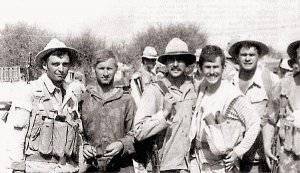 I understand only the one who himself at least once was in the thick of this battle. It is possible to brilliantly perform all exercises of firing at plywood targets, it is much more difficult to conduct aimed fire at a real armed opponent, overcoming psychological stress in oneself.
I understand only the one who himself at least once was in the thick of this battle. It is possible to brilliantly perform all exercises of firing at plywood targets, it is much more difficult to conduct aimed fire at a real armed opponent, overcoming psychological stress in oneself.It would seem strange, but the consumption of rifle ammunition - 100 per killed enemy - for any war becomes almost perfect. For example, in the First World War on the Eastern Front, the monthly requirement of the Russian army for cartridges was 250 million units. Thus, based on each enemy who died or died from wounds (about 800 thousand people), more than 12 thousand bullets were fired. Given the artillery fire, which accounted for half of all casualties of the enemy, the consumption of rifle ammunition per killed soldier amounted to almost 25 thousand cartridges.
In such a situation, every good shot is called a sniper, no matter from what distance it was made. The author of these lines, who has spent almost three years in different wars, hasn’t had a chance to personally encounter real sniper fire (from a distance of more than 600 meters). All damage from small arms was inflicted by both us and us with dagger fire, that is, with 100 – 150 m. And if we consider the types of weapons, then the most effective fire from a pistol was fired only at close range, not further than 3 – 5 m, from an automatic weapon - 150 – 200 m, from the SVD and machine gun - up to 300 m. By the way, this is what the American experience in Vietnam says.
In no case do not think that I deny the value of a sniper in battle, on the contrary - a good shot that brought the enemy, has always been considered a sign of high professionalism. In September, in the Dohanai-Gori area, west of Pul-i-Khumri, two mojaheds successfully selected a firing position and held two battalions of the 1985 regiment for half a day until our fighters “pulled” BMP-149 and fired automatic guns are not smeared shooters over the stones.
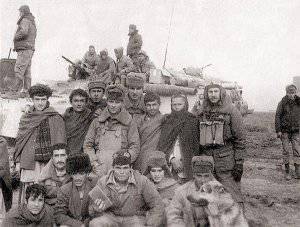 The mistake of our military theorists lies in the fact that the sniper, as a military specialty, is considered in the complex of all fire training of motorized rifle subunits. Usually, the platoon commander shoves the first recruit into his hands with a weapon, writes the number to his military ID, and from that day on the poor fellow who received a sniper rifle is called a sniper.
The mistake of our military theorists lies in the fact that the sniper, as a military specialty, is considered in the complex of all fire training of motorized rifle subunits. Usually, the platoon commander shoves the first recruit into his hands with a weapon, writes the number to his military ID, and from that day on the poor fellow who received a sniper rifle is called a sniper.In most armies of the world, snipers are trained in special training centers from three to six months. The selection is made on a competitive basis, out of the 20 – 30 candidates there is only one, but the best one.
Essentially, our units do not get snipers. The experience of recent local wars involving the Soviet and then the Russian Army suggests that all attempts to revive the sniper movement without a fairly serious professional attitude to the selection and training of specialists are doomed to failure.
All sighting devices that we have on small arms also require serious design changes. If during the day they allow the successful targeting of weapons to the target, then at dusk and at night the effectiveness of the fire decreases to zero. Numerous fires and the use of lighting bombs, mines, shells, rockets incapacitate night vision sights and preclude their effective use. The use of phosphor nozzles on the sighting device for night firing requires that the fighter carry with him a whole pocket of these fast-track wire brackets. The output is seen in the use of a double-circuit mechanical sight with tritium inserts, which allows you to shoot with high accuracy when, due to darkness, the usual sight is no longer visible.
All these low-cost measures could significantly improve the effectiveness of small arms in combat, but knowing the inertia and inertia of our military officials, we can assume that the proposals will remain on paper and will not go further than this article.
The Russian guys who are preparing to join the battle, you can advise a number of activities tested in hostilities.
Today, our politicians are unlikely to achieve "Chechenization", "Tatarisation" or "Dagestanization" of any local war and raking up the heat by proxy, as it was in Afghanistan after the 1985 year. All the brunt of the war will have to be borne on its shoulders, and in order to reduce the inevitable losses caused by poor training, understaffing and insufficient weapons of personnel, increase the number of portable heavy weapons in the units. Professionals prefer weapons with a flat trajectory of fire, which has a greater range of direct shot. With equal weight, the large-bore machine-gun “Rock” has an indisputable advantage over AGS-17. It will allow you to reach the enemy at a two-kilometer range wherever he hides, be it brickwork, armored personnel carrier armor, thick brushwood or a helicopter board.
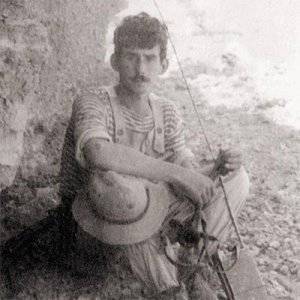 You can talk a lot about the advantages or disadvantages of mortar fire. The main problem is the level of training of the gunner and the ability to adjust the fire. Now estimate the weight of the mortar, base plate, 2 – 3 tens of mines, and you will receive additional 120 – 150 kg of platoon loading. Think carefully if you can handle such a load. It may be easier to carry a good art corrector with you and establish a stable relationship with the artillery supporting you. The mortar is good as a partisan weapon for covertly firing at government troops sitting at roadblocks, guard posts or in places of open congestion at a distance from 2 to 4 km.
You can talk a lot about the advantages or disadvantages of mortar fire. The main problem is the level of training of the gunner and the ability to adjust the fire. Now estimate the weight of the mortar, base plate, 2 – 3 tens of mines, and you will receive additional 120 – 150 kg of platoon loading. Think carefully if you can handle such a load. It may be easier to carry a good art corrector with you and establish a stable relationship with the artillery supporting you. The mortar is good as a partisan weapon for covertly firing at government troops sitting at roadblocks, guard posts or in places of open congestion at a distance from 2 to 4 km.Our troops more often had to conduct combat operations at short distances with the enemy in hiding. Under other conditions, the guerrillas, as a rule, do not enter the battle and try to avoid it at any cost. In this case, our advantage in military equipment and its armament is reduced to nothing. So it was 1 in May 1986 in Panjshir, 31 in December 1994 in Grozny, in March 1996 in Yarysh-Mardy.
You can equalize the chances of the parties in such a battle by quickly dismounting the infantry and organizing fire resistance from those types of weapons that will ensure the suppression of the enemy in the shelter. The ideal could be considered the use of artillery in direct fire.
In April 1987, the commander of the 201st MSD, Colonel Shekhovtsov, during the assault on the fortified area in southern Baghlan, reinforced the assault battalions with two batteries of the Akatsiya 152-mm self-propelled artillery mounts, direct-fire them. Explosive high-explosive shell explosions broke through gaps in the walls into which they easily passed Tanks and BMP, crushed any fire resistance of the enemy and ensured the successful completion of the task. But in that battle, the distance between the defensive lines of the Mujahideen was 700–900 m and made it possible not to expose self-propelled guns to fighter fire from grenade launchers. Unfortunately, today our adversary is not so stupid as to allow himself to be smashed in this way.
Where is the way out? Based on my experience, I would advise all commanders and commanders preparing for war with partisans, firstly, to minimize large-scale operations using a large number of personnel. The most promising are the actions of small, 3-4 people, reconnaissance groups equipped with compact and reliable means of topographic location and communications, including artillery spotter or aircraft gunner, acting in collaboration with artillery units or aviation.
Their task is to detect the enemy and, avoiding fire contact with him, to ensure the most effective defeat by artillery and aviation fire. Secondly, to change the staff structure of a motorized rifle platoon by introducing a grenade launcher station armed with an RPG-7 into it. Thus bringing the number of grenade launchers in the platoon to six, we increase the firepower of this unit almost to the level of the battery 82-mm anti-tank guns. Why RPG-7, and not RPO "Bumblebee" or GP-25?
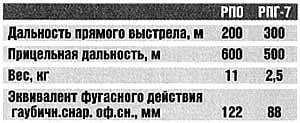 The fact is that, possessing comparable characteristics, RPO has a significant drawback - one-time use, and with fire contact it is very difficult to hit the target with the first shot. As a rule, the destruction of a target at a direct shot range is made by two shots - sighting and only then, with the amendment, to kill.
The fact is that, possessing comparable characteristics, RPO has a significant drawback - one-time use, and with fire contact it is very difficult to hit the target with the first shot. As a rule, the destruction of a target at a direct shot range is made by two shots - sighting and only then, with the amendment, to kill.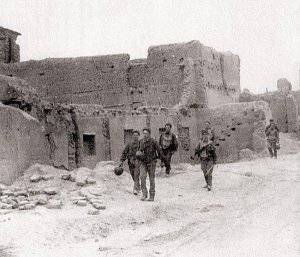 In such conditions, the destruction of the target from the RPO requires 22 kg of portable weapons, and the defeat from the RPG - 5 kg (the weight of two PG-7В). Let us add to this the indisputable advantage of the PGO-7 optical sight over the mechanical sight to the RPO and the significant difference in the cost of the shots made: PG-7В - 25 dollars, RPO - about 100 dollars. We get significant financial savings, which is also important for today's Russia.
In such conditions, the destruction of the target from the RPO requires 22 kg of portable weapons, and the defeat from the RPG - 5 kg (the weight of two PG-7В). Let us add to this the indisputable advantage of the PGO-7 optical sight over the mechanical sight to the RPO and the significant difference in the cost of the shots made: PG-7В - 25 dollars, RPO - about 100 dollars. We get significant financial savings, which is also important for today's Russia.The effectiveness of defeating lightly armored targets with RPG-7 fire is considered by our military theorists as 0,3. This means that in combat, an 3 shot must be fired from a grenade launcher to destroy an BMP-BTR.
The shelters used by militants are usually comparable in protection with armored vehicles equipped with anti-bullet armor, and the ammunition consumption for their defeat can be compared. The presence of 6 grenade launchers in the compartment with ammunition in 6 RPG shots allows you to reliably suppress 12 targets, which corresponds to the task of a motorized rifle platoon in an offensive battle.
Chechen separatists empirically reached the understanding that in urban combat (their favorite type of combat), one can achieve any significant success only by concentrating anti-tank weapons to suppress any target. Moreover, they went further, taking up the improvement of grenade launcher shots for various purposes.
Gasoline is poured into anti-tank grenades, attached to the head of a grenade on a pair of 400 gram trotyl sticks. It is difficult to judge the effectiveness of such innovations. It is problematic to hit the target with this bomb, more than 50 m, but the psychological effect of its use on the positions of government troops is undoubtedly high.
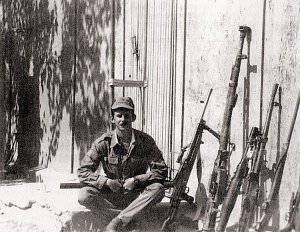 For many years we have been talking about the need to adopt a high-explosive fragmentation or incendiary grenade for an RPG. But here we are faced with the Geneva Conventions, imposing a restriction in 400 g on high-explosive fragmentation ammunition used in firing from wearable weapons and limiting the use of incendiary weapons. True, these restrictions do not apply to ammunition intended for combined exposure. For example, a cumulative anti-tank grenade with an internal notch on the metal shell of a warhead or a signal-lighting grenade with napalm or thermite filling.
For many years we have been talking about the need to adopt a high-explosive fragmentation or incendiary grenade for an RPG. But here we are faced with the Geneva Conventions, imposing a restriction in 400 g on high-explosive fragmentation ammunition used in firing from wearable weapons and limiting the use of incendiary weapons. True, these restrictions do not apply to ammunition intended for combined exposure. For example, a cumulative anti-tank grenade with an internal notch on the metal shell of a warhead or a signal-lighting grenade with napalm or thermite filling.Speaking about the combat use of grenade launchers and rifle grenades, it is necessary to note their main drawback - this is the difficulty of aiming fire and the low power of explosives contained. All those who have encountered the combat use of this weapon know that it is possible to effectively hit an enemy with VOG-25, GP-23 or a rifle grenade, only if they hit the enemy in the forehead, and then provided that he is without a helmet. With a mass of 320– 350 g, these grenades, if you believe the characteristics, give 200 to 800 fragments with a radius of damage of at least 10 m. Unfortunately, a fragment weighing 0,5-1,5 g can hardly inflict serious damage to the enemy’s infantry. As a rule, this weapon is used to conduct an addressless disturbing fire.
Each battle is not similar to the other, and you can only survive by fighting experience if you win it. Despite all the horror and absurdity, the war in Chechnya, in Afghanistan, Transnistria gave Russia people who know the war and know how to fight. This experience is invaluable. It can not be purchased at our military schools and academies. Therefore, if you do not have the opportunity to get extra heavy rifle armaments, night shooting attachments, a good art director, and your boss’s professional competence raises doubts about the success of the upcoming operation - try to get at least one real veteran of the recent wars into your unit. And may his experience and your military happiness help you survive and conquer.
Information